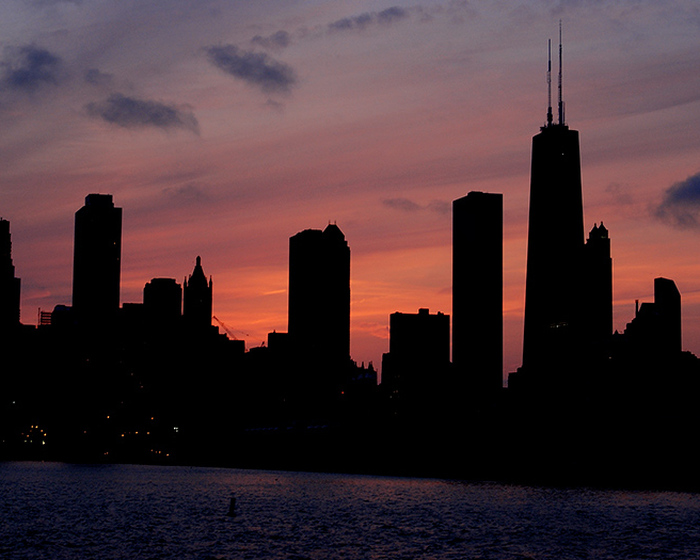
US Grid Infrastructure
Energy security and reliability are continuing to make headlines. The challenges of climate change, increasingly severe weather events, geopolitical tensions, and underinvestment in energy transmission infrastructure have created a perfect storm.
An aging infrastructure is being used more heavily than ever as energy needs have skyrocketed. An increasing need for energy and a deteriorating infrastructure has resulted in more frequent power outages.
Between 2015 and 2020, major blackouts increased by 60%.
Just last year, 1.2 million customers across eight states lost power when Hurricane Ida made landfall. In the west, utilities had to implement planned shutoffs to prevent sparking wildfires.
There’s a huge economic cost, too. The U.S. Department of Energy has estimated that power outages cost U.S. businesses $150 billion every year. Large power outages have cascading effects on other infrastructure sectors. They can affect communication and transportation networks, access to clean water, the food supply, healthcare, and more.
The U.S. power grid is at least 25 years old, and by 2030 it needs to double its transmission capacity, and may need to triple current capacity by 2050 to accommodate the country’s rapidly increasing supply of cheaper, cleaner energy and meet increasing power demand for electric vehicles, heat pumps, and to reduce power outages from severe weather.
The Biden administration has made $13 billion available for states, utilities, and others to upgrade the system to support modernization and build-out of long-distance, high-voltage transmission and distribution lines. The Infrastructure Law provides $10.5 billion in funding for the Grid Resiliency and Infrastructure Program (GRIP), focusing on three programs, to enhance grid flexibility and improve the resilience of the power system against growing threats of extreme weather and climate change.
The GRIP program will deliver projects centered on the following.
- Grid Resilience Utility and Industry Grants ($2.5 billion)
This grant provides funding for comprehensive transmission and distribution technology solutions to address the impacts of multiple hazards, including wildfires, floods, hurricanes, extreme heat, extreme cold, storms, and any other event that can cause a disruption to the power system. Eligible applicants include electric grid operators, storage operators, generators, transmission owners or operators, distribution providers, and fuel suppliers. - Smart Grid Grants ($3 billion)
This includes research, development, and demonstration activities to increase the flexibility, efficiency, reliability, and resilience of the electric power system. Funded projects will focus on increasing capacity of the transmission system, preventing faults that may lead to wildfires or other system disturbances; integrating renewable energy at the transmission and distribution levels; and facilitating integration of increasing numbers of electric vehicles, buildings using electricity to heat and hot water and other grid-edge devices. Eligible entities include higher education institutions, for-profit companies, non-profit organizations, state and local government entities and tribal nations. - Grid Innovation Program ($5 billion)
This program provides up to $5 billion in financial assistance to one or multiple states, Tribes, local governments, and public utility commissions to collaborate with electric grid owners and operators to deploy projects that use innovative approaches to transmission, storage and distribution infrastructure.
Utilities Have Options
There are three primary strategies to grid hardening.
- Mitigate destruction by reducing the size and duration of an outage.
- Implement measures that enable the distribution system to automatically manage disruptions, without the need for human initiation.
- Respond quickly by getting the right assets into the field to restore service.
The most common grid hardening tactics.
- Reinforcing key infrastructure
- Elevating substations
- Undergrounding
- Vegetation management
- Investing in smart grids, reclosers or backup microgrids
- Sustainable solutions
- Assessing and replacing poles
Reinforcing key infrastructure.
Either a higher pole class or utilizing wood pole alternatives are a key aspect of updating your grid. When poles cannot be replaced, they can be reinforced with guy wires and weather-resistant coatings.
Elevating substations.
Protect against substation flooding by elevating them above water level or installing moats for added protection.
Undergrounding.
Undergrounding is a very expensive measure, but risk-prone areas or areas with critically important infrastructure, such as police, hospitals, and fire stations, may be a good candidate for undergrounding.
Vegetation management.
Management of vegetation is a key, if overlooked, storm-hardening tactic. Utilities can be proactive by identifying hazardous trees, areas at risk for fall-ins, and managing right of ways.
Backup generators and microgrids keep critical infrastructure working.
When systems go down, backup generators and microgrids can help to power particular loads, which can be key for critical systems like healthcare. Microgrids can not only supply power independently of the grid, it can run operations through frequency response and voltage regulation.
Smart technology gives utilities a step ahead.
Smart grid technologies not only enable customers to use energy more efficiently, they allow grid operators to manage systems more effectively. Smart meters, integrated distribution generation, smart energy storage, and more not only reduce operating costs, they also reduce the stress on the grid.
A clean energy sector is a reliable energy sector.
Sustainability needs to be a priority when considering strategies to harden the grid. Less sustainable solutions produce more greenhouse gases, which contribute to the increasing frequency and severity of weather events and causing a cycle that’s hard to break out of.
Assessing and replacing poles.
Replacing poles is not only one of the most common grid-hardening tactics, it’s also one of the best. The National Oceanic Atmospheric Administration states that a pole be able to withstand winds of 145 mph on the coast, a requirement that usually requires an alternative to wood poles, such as ductile iron.
Ductile Iron Plays a Key Role in Grid Hardening Strategies
In an increasingly volatile climate, ductile iron poles are a highly durable and sustainable solution for energy transmission and distribution. Manufactured by centrifugal casting, McWane Poles are engineered for consistent strength and dimensional control. They are engineered with a minimum yield strength of 42ksi, an ultimate yield strength of 60ksi, and a minimum percentage of elongation of 10%.
Because of ductile iron's advanced metallurgy, it has the physical strength of steel with the corrosion resistance of cast iron—making it the ideal solution to harden the grid against multiple threats in diverse environments.
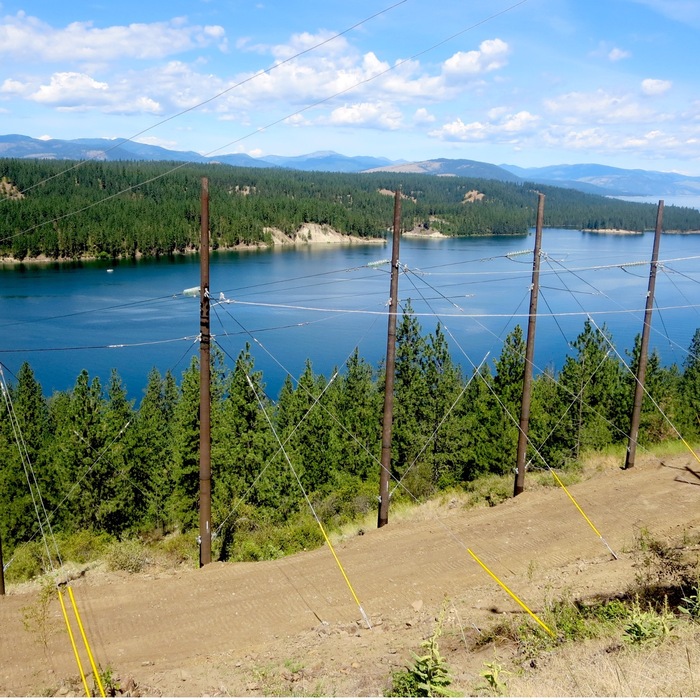
Environments Near Water Sources (Corrosion Resistance)
Ductile iron has an oxide layer after being removed from the mold that creates a natural barrier to corrosion. Our Permasafe Ceramic Epoxy provides additional protection.
In a side-by-side test between ductile iron and weathering steel, the weathering steel lost 50% more grams than ductile iron and almost 300% more of its total mass. In addition, ductile iron is expected to last 50 to 100 percent longer than weathering steel in normal applications.
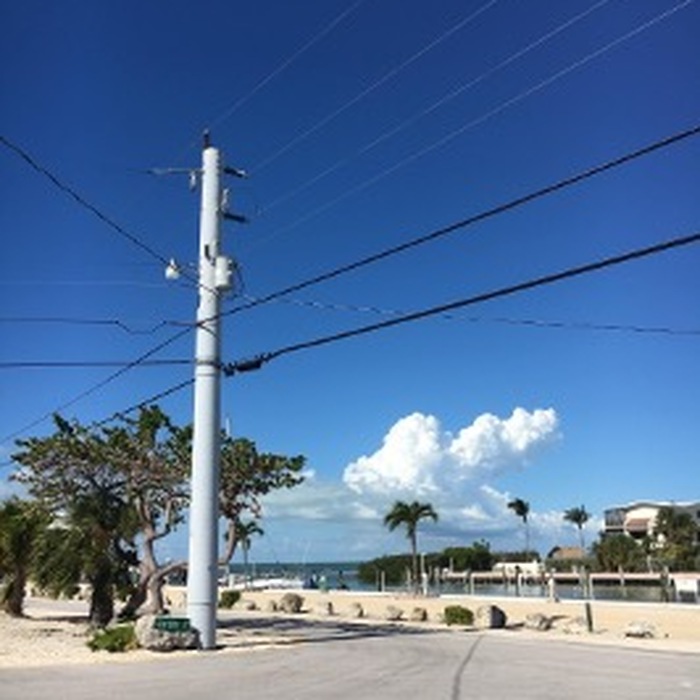
Storm Loading (Wind)
Due to a ductile iron’s performance under load, numerous coastal utilities in areas like the Florida Keys, Florida coastal regions, Texas Gulf Coast regions, and the Bahamas have adopted their use for storm hardening.
In areas with high wind loading strength requirements, wood poles have to be huge and heavy to withstand the pressure. The fact that wood is treated with toxic preservatives is also a concern in environmentally sensitive communities such as the Keys. And, in spite of being treated, wood poles do still rot.
The economic implications of ductile iron’s longevity are huge in terms of fewer repairs and replacements. Even though the initial purchase price of ductile iron is more than wood, lifecycle cost comparisons, which include items such as reduced maintenance over all those years as well as lower shipping and installation costs, can more than make up the initial cost difference.
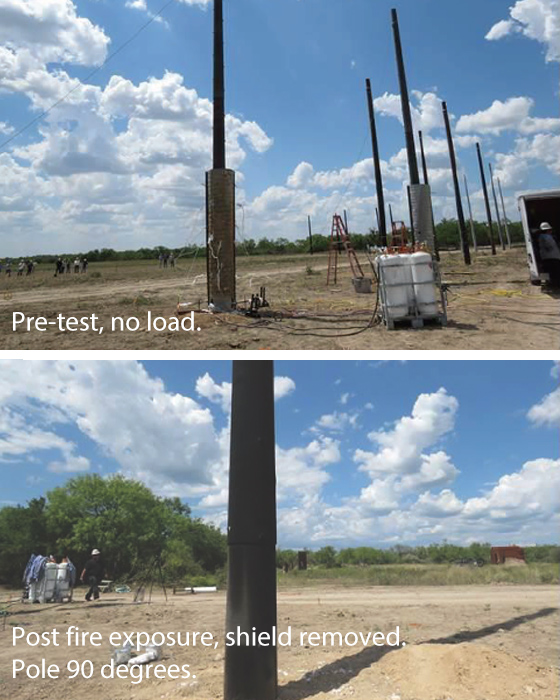
Fire Resistance (Wildfire Danger Zones)
Ductile iron is fireproof, heat-resistant, and able to sustain loads well beyond the requirement before failure. Ductile iron poles have undergone fire performance testing at the Western Fire Institute as well as the Southwest Research institute (SWRI). In both cases, results reveal that the wildfire simulations have no negative effect on ductile iron. After the SWRI test, the fire-exposed poles, along with a control pole, were subjected to a full-scale destructive test. The two fire-exposed poles had a greater moment capacity than the pole that was used as a control, suggesting that the poles were made stronger by the fire exposure.
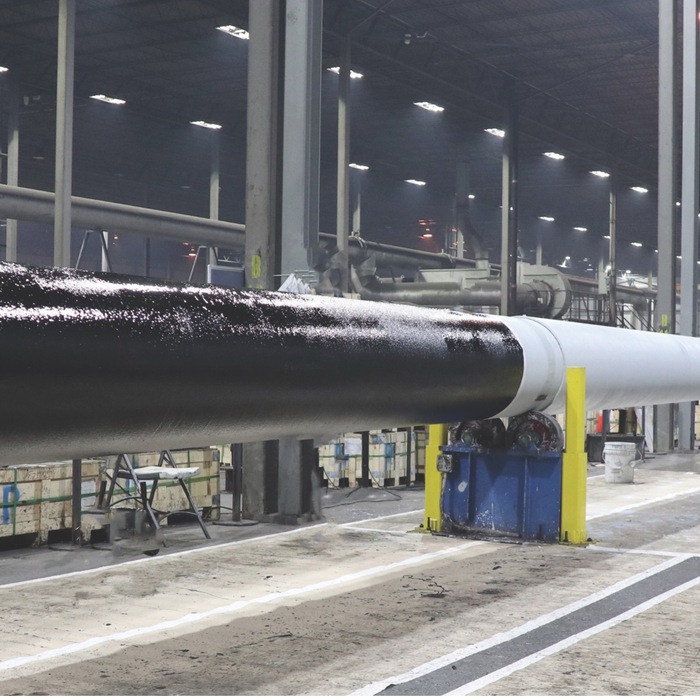
Lower Environmental Impact than Other Alternatives
Ductile iron poles are made with 95% recycled material and can be recycled at end of life. Ductile iron poles also weigh about 45% less than wood poles and are much lighter than concrete. Because ductile poles are so lightweight and do not require as much energy and fuel to transport, they reduce carbon emissions as well as lower transportation costs. Further, every ductile iron pole saves two to three trees from being cut down, and because ductile iron lasts more than twice as long as wood poles, they don’t need to be replaced as frequently, saving even more trees throughout its lifecycle.
Wood poles are often treated with pentachlorophenol (pcp), which can leach into the ground water and causes health and ecological risks. Not only is PCP a manufactured chemical and restricted-used pesticide, it is now being phased out of the industry over the next five years. Until February 2024, registrants may continue to produce, sell, and distribute wood preservatives containing PCP while wood treatment facilities transition from PCP to alternatives. After that time, wood treatment facilities will be allowed to use their existing stocks of PCP to produce treated wood until February 2027.
Unlike pentachlorophenol, ductile iron’s coating is impermeable to organic contaminants, protecting clean water from environmental spills and the environment from contaminants in wastewater. McWane’s ceramic-epoxy embedment coating and ductile iron material are certified by the National Sanitation Foundation (NSF) to be safe for use in contact with potable water sources. McWane Poles have been used for projects where poles are placed near well water for this reason.
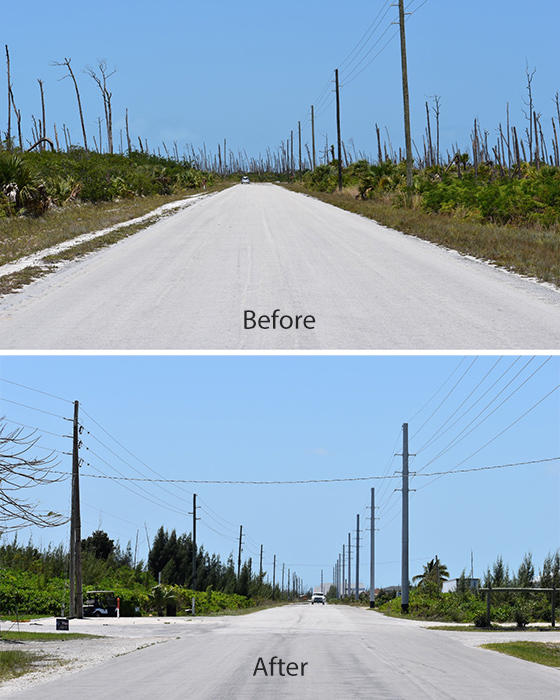
Case Study: Bahamas Power & Light
After Hurricane Dorian struck the Bahamas in 2019, Bahamas Power and Light knew they needed to replace their traditional wood poles with something capable of withstanding future impacts.
Post-Dorian strengthening efforts were BPL’s first foray into ductile iron poles. They utilized ductile iron poles from McWane to reconstruct a transmission line that was destroyed during the hurricane.
Beyond the higher strength ratings of ductile iron, BPL selected ductile iron over steel and composite because they can be produced, delivered, and installed much more quickly. This, combined with the fact that they are fireproof and have a much longer life expectancy, made ductile iron the clear choice for BPL.

